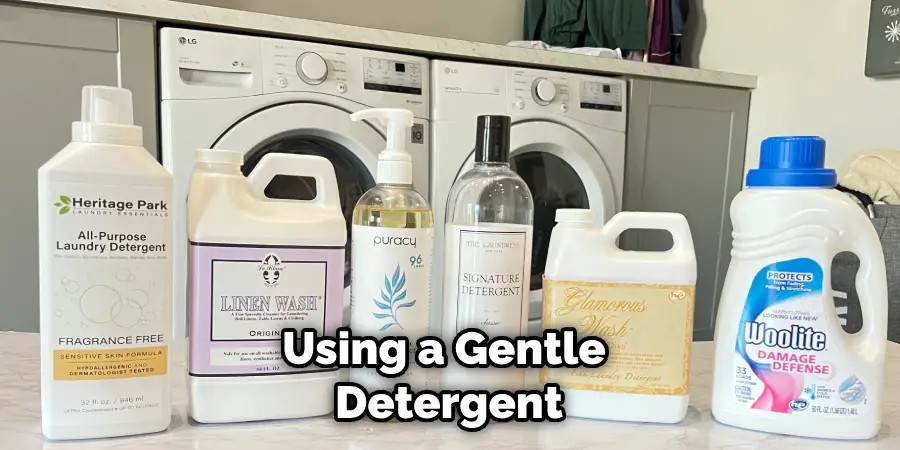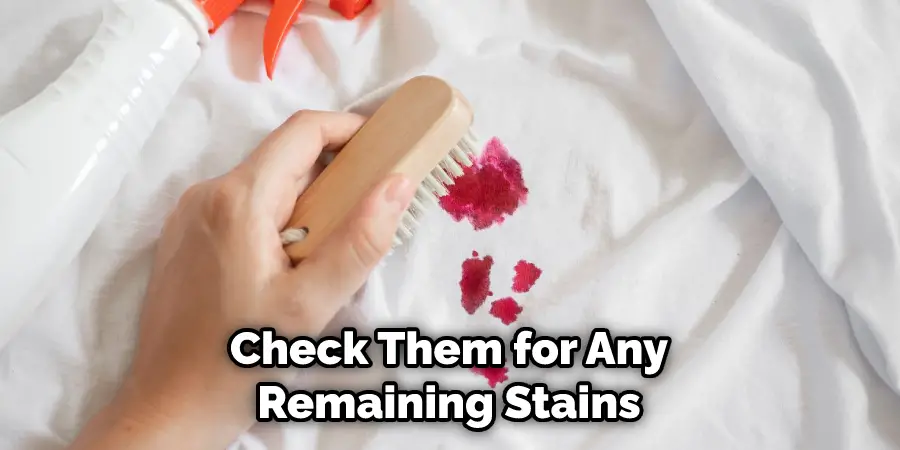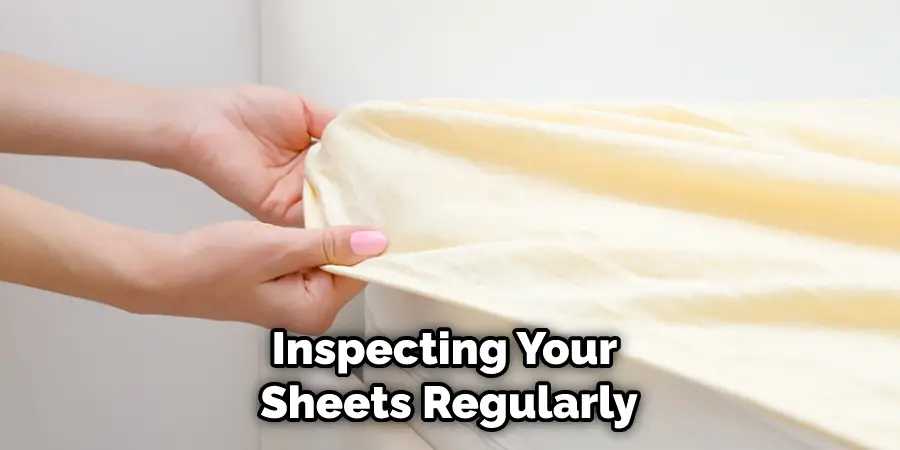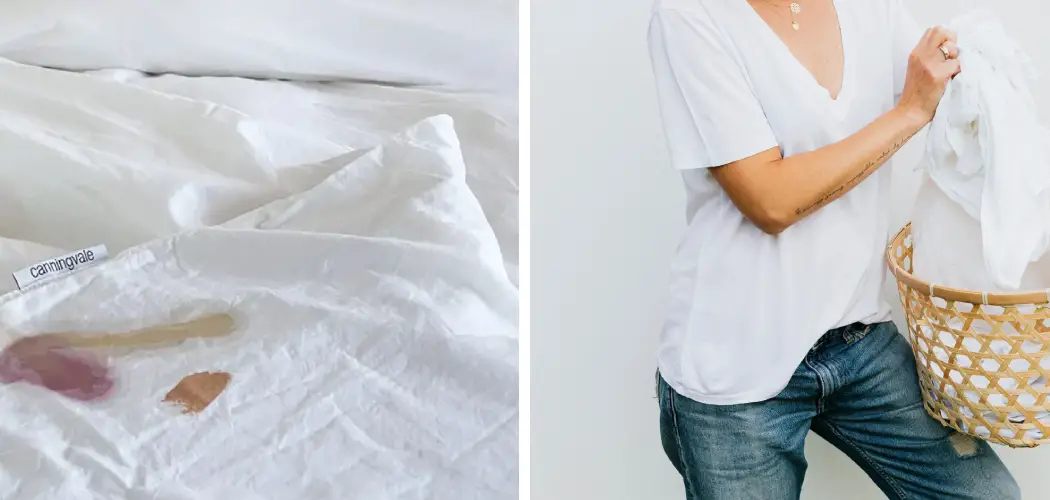It’s happened to all of us; you were laying in bed and spilled a drink, or dinner got away from you while you were eating in bed, and now your beloved sheets are stained. Don’t fret! Stains don’t have to mean the death of your favorite set of sheets.

In this blog post, we will teach you an easy-to-follow method for removing any stain from a bed sheet. With some simple items found around the house, plus some patience and dedication, your sheets can go back into action without putting too much strain on your wallet or time schedule. Read on for more information about how to remove stain from bedsheet with minimal fuss – it’s simpler than you think!
Why Removing Stain From Bedsheet is Difficult?
Stains on bedsheets can be particularly difficult to remove, as they are usually quite deep down, and the fabric is quite delicate. This means that you need to take extra care when cleaning the sheets to ensure that no damage occurs.
The best way to do this is by using a gentle fabric cleaner and following the instructions carefully – otherwise, you could end up with a damaged, discolored sheet instead of the fresh and clean one you were hoping for. It is also important to note that certain fabrics are more prone to staining than others, so it is wise to pre-treat the stains before beginning the cleaning process.
Choosing the Best Cleaner for Removing Stain From Bedsheet
When looking for the best cleaner to use, it’s important to consider the type of stain and the fabric of your bedsheets. For instance, if the sheets are made from cotton, then you will want to choose a gentle detergent that is specifically designed for this fabric. Similarly, special cleaners may need to be used depending on what type of stain is present. For example, there are now specific protein-based cleaners available for removing blood stains – which can be very difficult to shift otherwise.
Once you have chosen the best cleaner for your needs, it’s time to get started on removing that pesky stain!
Required Materials
- Water
- Gentle Detergent or Stain Remover
- Soft Cloth
- Soft Bristled Brush
10 Steps on How to Remove Stain From Bedsheet
Step 1: Test Your Cleaner
Before you start to clean, it’s important to test the cleaner on an inconspicuous area of your bedsheet. This will help you ensure that it won’t damage or discolor the fabric. The right cleaner should not have any negative effects on the fabric – so if you notice any discoloration or damage, it’s best to choose another product.
Step 2: Pre-Treat the Stain

Once you have found a suitable cleaner, pre-treat the stain with it. If you are using a protein-based stain remover, then make sure to follow the instructions carefully. If you are using a gentle detergent, then dab the affected area with it before rubbing gently.
Step 3: Rinse
Once you have pre-treated the stain, rinse off the cleaner with warm water. Make sure to use lukewarm water – hot or cold can cause damage to some fabrics. Use a soft cloth to wipe away any excess cleaner.
Step 4: Apply the Detergent
Once you have rinsed off your pre-treater, use a soft cloth or a soft-bristled brush to apply a gentle detergent directly onto the stain. Again, make sure that the water is lukewarm, as hot or cold water can cause damage to some fabrics.
Step 5: Soak the Sheet
Once you have applied the detergent, leave your sheets to soak for several hours in lukewarm water. This will help loosen and remove any stubborn stains that were not budging before. Make sure to check on them every few hours, as you don’t want them to be in the water for too long.
Step 6: Rinse Again
Once your sheets have soaked, rinse them off with lukewarm water to remove any remaining detergent. Use a soft cloth to wipe away any excess residue.
Step 7: Check For Remaining Stains

Once you have rinsed off your sheets, check them for any remaining stains. If there are any stubborn marks that remain, repeat steps 2-6 until they have been removed. The remaining stain should eventually come off if you are patient and follow the steps properly.
Step 8: Machine Wash
Once your sheets have been thoroughly rinsed, they should be ready to go in the machine. Follow the washing instructions on the label carefully – usually, it’s best to use a gentle cycle with cold water.
Step 9: Air Dry
Once your sheets have been machine washed, air dries them to ensure that they don’t shrink. Avoid using a tumble dryer or direct heat, as this can damage the fabric and cause discoloration. Instead, hang your sheets outside in the shade to help them retain their color.
Step 10: Inspect
Once your sheets have dried, inspect them for any remaining stains. If you spot any, repeat steps 2-9 until they are completely gone. Inspecting your sheets regularly will also help to prevent future stains from occurring.

Following these steps can help you ensure that your bedsheets remain in pristine condition and free from stains! With a bit of patience and the right cleaning products, you can easily remove any unwanted stains from your bedsheets.
8 Common Mistakes to Avoid
- Not testing a cleaning product on an inconspicuous area of the sheet first. Always test any cleaning agent/solution you use on a small, hidden corner of the bedsheet to check for colorfastness and possible damage.
- Applying too much pressure while scrubbing. Scrubbing too hard may cause permanent damage to your bedsheet. Use gentle strokes instead and rinse the area after applying a cleaning solution.
- Not using cold water. Hot or warm water may set the stain, making it much harder to remove. So, always use cold water when attempting to remove a stain from your bedsheet. Hot water should only be used after the stain has been successfully removed.
- Not pre-treating the stain by blotting it before trying to remove it. Blotting is important as it will help draw out the liquid or residue from the fabric, making it easier to clean and preventing the stain from spreading further.
- Not using the right cleaning product. Different stains require different cleaning products and techniques. Be sure to choose the right one for your stain and use it according to the instructions on its label.
- Not pre-soaking the bedsheet when necessary. If a stain is particularly stubborn, you may need to pre-soak the bedsheet in warm water and a suitable detergent.
- Not using the right washing cycle when machine-washing the bedsheet. The fabric type, stain, and amount of dirt will dictate which wash cycle is best for your bedsheet. Check your washing machine’s manual for specific instructions on how to select the most appropriate cycle.
- Not drying the bedsheet properly. When possible, hang your bedsheet out to dry instead of using a tumble dryer. This will help eliminate the possibility of the stain setting in permanently due to high temperature and agitation from the machine’s rotation. If you must use a tumble dryer, set it at its lowest heat setting or use the ‘no heat’ setting. That way, you won’t have to worry about the stain setting in permanently.

By following these simple tips, you can easily remove any stain from your bedsheet. Just remember to always test any cleaning agent or solution on an inconspicuous area of the fabric first, use cold water, and pre-treat the stain if necessary. With a bit of patience and care, you can make your bedsheets look good as new in no time!
Frequently Asked Questions
How Long Should You Keep the Bedsheet in the Cleaner?
The amount of time needed to remove the stain depends on the type and severity of the stain. Generally, you should leave your bedsheet in the cleaner for at least half an hour before removing it. If the stain is more stubborn or deeply embedded in the fabric, then you may need to leave it for longer. Make sure to check your individual cleaner’s instructions for the best results.
Is It Safe to Use Stain Removers on Bedsheets?
Yes, it is safe to use stain removers on bedsheets. However, you should always read and follow the instructions on the product label before using any stain remover. Also, be sure to test a small, inconspicuous area of the bedsheet before tackling the stain, as some products may cause discoloration or damage to the fabric.
Conclusion
Removing a stain from a bedsheet isn’t the most daunting of chores, but it can be tricky. With this guide, you now have all of the tools to tackle stains with ease. Remember to act quickly when confronting a stain and use the best cleaning products for your particular fabric. Also, take special care if you are dealing with silk or other delicate fabrics. With knowledge comes power!
Experiment with different approaches and find what works best for preserving your bed sheets. As long as you keep in mind the above tips and tricks, you will never have to lie awake at night worrying about unpleasant AND permanent stains in your home.
The good thing is that following these steps on how to remove stain from bedsheet does not require a lot of effort and can make a huge difference to the quality of your life—so what are you waiting for? Get out there and start cleaning!

